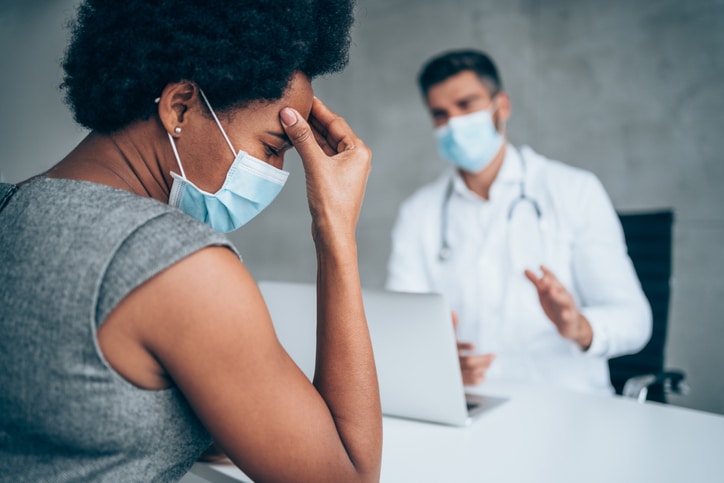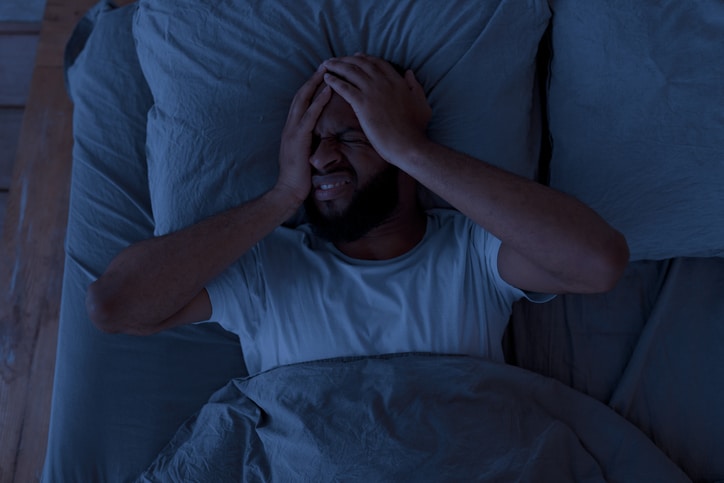Everyone suffers from a severe headache from time to time, but not every bad headache is a migraine. Knowing the difference just might lead to a solution.
“Many people come to a physician complaining about migraines,” says Neha Gandhi, MD, neurologist on the medical staff at Methodist Dallas Medical Center, “but there are actually dozens of types of headaches that are likely causing that pain.”
Typically, a doctor would diagnose a migraine when a patient shows at least two of these headache-related symptoms:
- Nausea
- Vomiting
- Sensitivity to light or sound
Another thing that sets migraines apart is that they can be disabling in nature for the patient. They often make it difficult to concentrate, and you may have to lie down, for example.
Dr. Ghandi suggests that anyone who believes they suffer from migraines should keep a “headache diary.” Log the date, time, description, and location of each headache and share those records with your doctor to help pinpoint symptoms, possible triggers, and warning signs that a migraine is coming on.
In many cases, Dr. Gandhi says, that annoying to sometimes unbearable head pain can be remedied with some simple lifestyle changes – so long as it’s considered a “primary” headache, that is.

HEADACHE TYPES
Headaches fall into two categories: primary and secondary. Primary headaches occur in the absence of structural disease in the brain, while secondary headaches are typically caused by a tumor, bleeding, or increased pressure in the brain.
Think of it like this: When the headache is primary, the headache itself is the problem, rather than the underlying symptom of a disease. So while this type of headache can be debilitating, they aren’t dangerous. Some examples of primary headaches:
- Migraine: The most common form of headache, migraines can last anywhere from two to 72 hours and are characterized by throbbing pain on one side of the head or the other, nausea and/or vomiting, and sensitivity to light and sound.
- Tension: Commonly known as a “hatband headache,” these headaches cause pressure-like pain in the temples, forehead, and around the back of the head, lasting from hours to days.
- Sinus: Typically accompany sinusitis, an inflammation of the sinus cavities, these headaches consist of dull throbbing behind the eyes, cheeks, and forehead, but may even extend to the teeth and jaw.
- Cluster: A relatively short-lived but intense headache that typically affects just one side of the head, this type of headache is frequently associated with a stuffy nose, an enlarged pupil, or a droopy eyelid.
- Hypnic: Often called an “alarm-clock headache,” these rare nighttime pains occur in patients between 40 and 80 and typically last between 15 and 60 minutes.
Whether it’s a primary or secondary headache, a physician will need to assess your pain and guide you through a plan to diagnose the condition and alleviate the pain.

POSSIBLE TRIGGERS
Nearly one in five women suffer from migraines, compared with one in 10 men, and they have plenty of company. An estimated 28 million Americans suffer from these debilitating headaches.
The causes behind that pain may be just as numerous, from getting too little sleep to triggering foods and alcohol, to hormonal changes and even the weather. Sometimes it’s a combination of all of those.

But Dr. Gandhi says the best way to prevent headaches is to take care of your body. She suggests focusing on a few key issues:
- Hydrate: Most people don’t drink enough water during the day, and there’s a documented link between headaches and dehydration. The rule of thumb is for women to drink about 11 cups of water a day, and 16 cups for men. Your body needs it to keep operating as it should.
- Exercise: Physical activity, like Pilates or running, can loosen up tight neck and back muscles and send positive hormones to the brain to keep any incoming pain at a minimum. Dr. Gandhi enjoys practicing yoga for both its physical and mental benefits.
- Eat right: Dr. Gandhi says many patients admit to skipping meals, which directly correlates to more headaches. Constant blood sugar fluctuation can create more health problems than just headaches. Snacking on nuts or vegetables in between meals could help prevent hunger pangs and migraines.
- Sleep well: According to the Centers for Disease Control and Prevention, headaches are just one of the many issues that can stem from sleepless nights. You may also be at higher risk for obesity, type 2 diabetes, high blood pressure, heart disease, and stroke. A third of adults admit to getting less than the recommended amount of sleep: seven to eight hours a night.
- Medicine: Medication is an option for headache and migraine sufferers, whether it’s over the counter or a prescription from a doctor. But Dr. Gandhi advises identifying your triggers before reaching for a pill. And she advises talking to a doctor before self-medicating a headache.
“If you have kept up with your meals, hydration, and relaxation for several weeks with no improvement, it is time to see a specialist, like a neurologist, to help find a diagnosis and the root of your problem,” Dr. Gandhi says.

